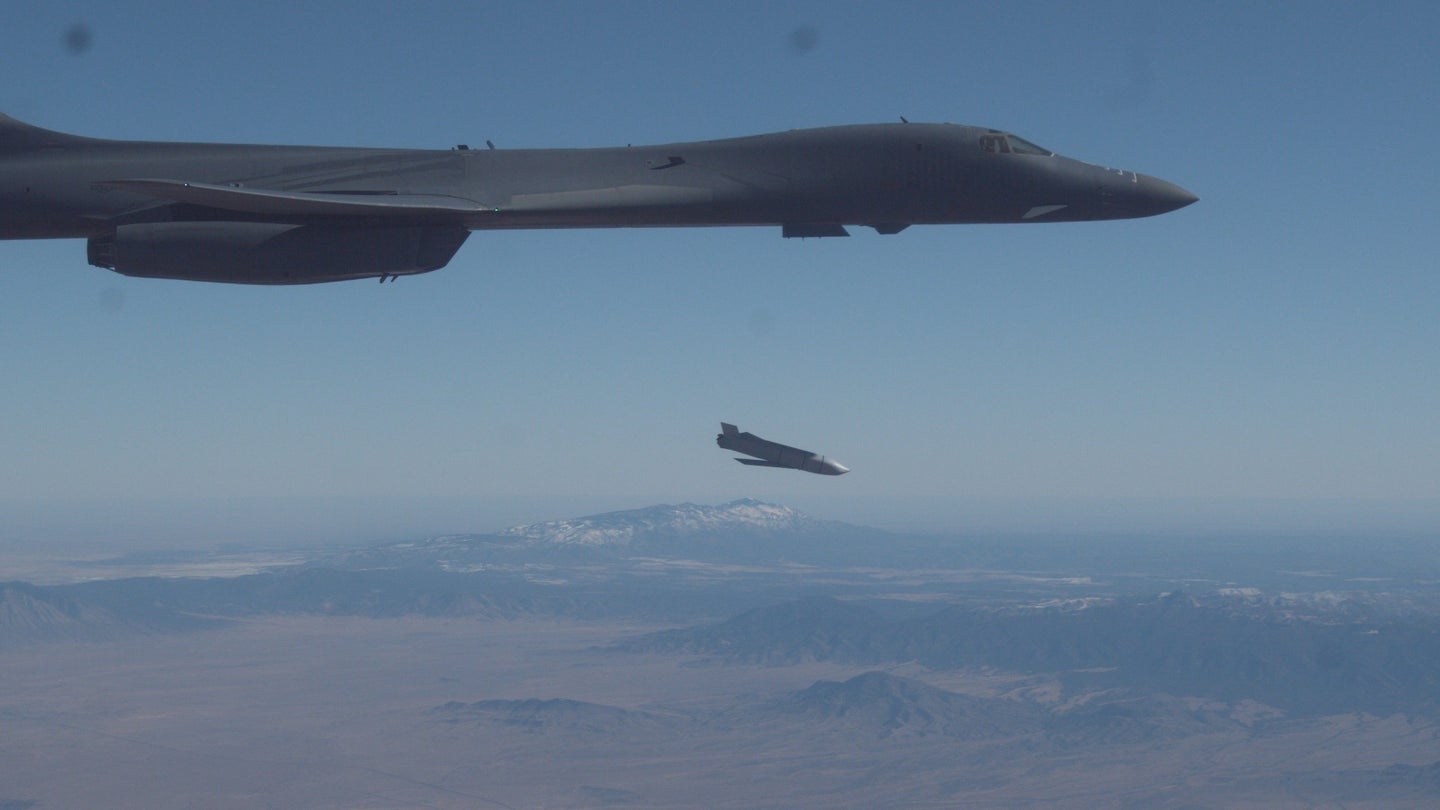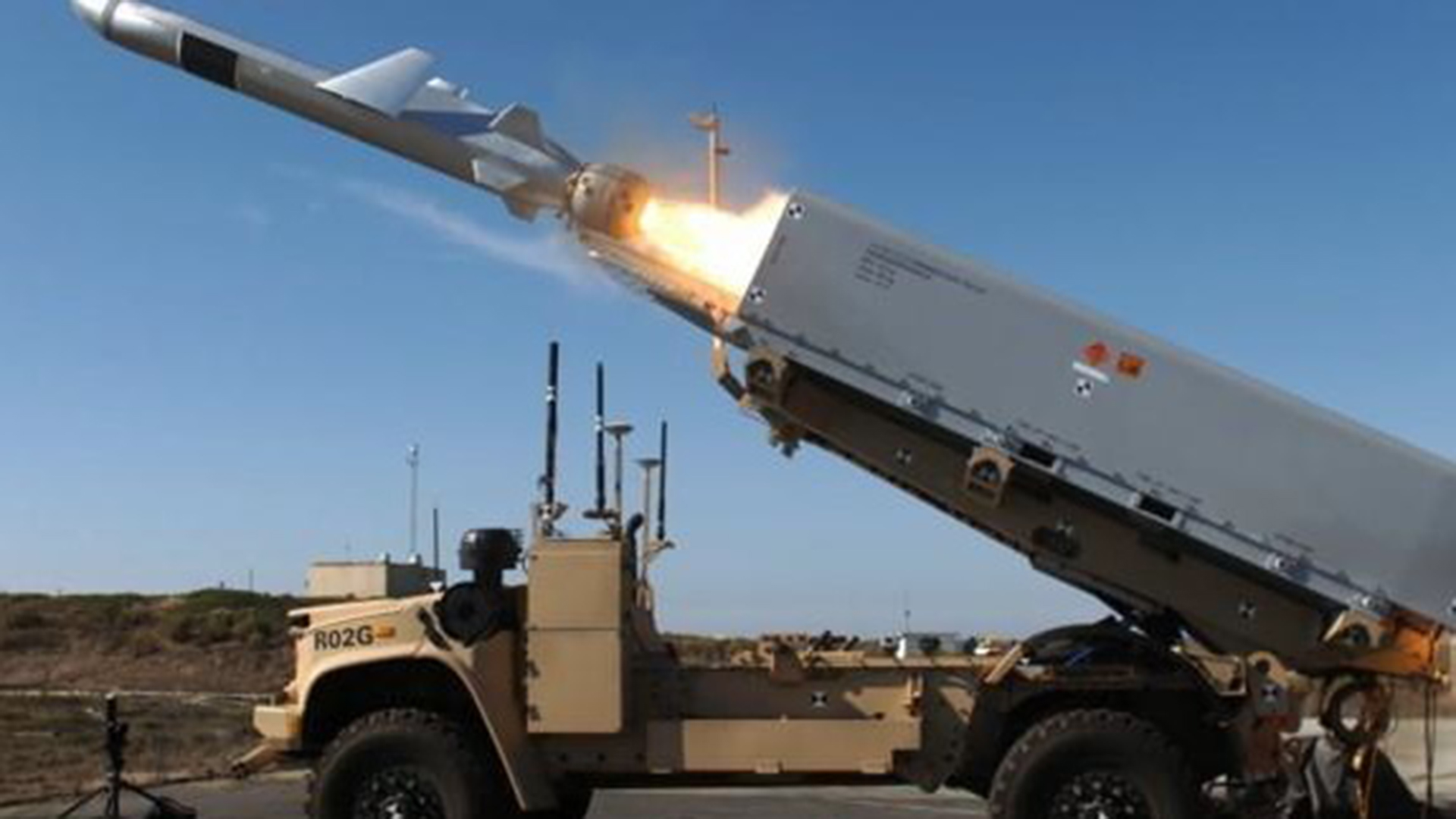Military buying more missiles and other weapons to fight China, Russia
The US military is heavily investing in weapons for a war with a near-peer adversary.

If you had any doubt that the Defense Department is pivoting away from fighting terrorists to getting ready for the big war against China or Russia, just look at the missiles and other munitions that the military branches plan on buying in fiscal year 2024.
The Department of the Navy in particular plans to invest in buying and upgrading a total of 830 of various types of Tomahawk missiles in the coming fiscal year, compared with the 552 Tomahawks that it procured for this fiscal year, according to the service’s proposed budget.
The Navy plans to upgrade 646 missiles in its inventory, 472 with a new radio system that replaces the older Satellite Data Link Terminal and it intends to recertify 274 missiles with navigation and communication upgrades and the radio upgrades they received in the prior year, said Navy Lt. Kassie Collins, a spokeswoman for the service.
Subscribe to Task & Purpose Today. Get the latest military news, entertainment, and gear in your inbox daily.
All total, the Navy is asking for $6.9 billion for weapons systems, a $2 billion increase from this fiscal year, according to the service’s proposed budget. That money would include funding for 91 Long Range-Anti-Ship Missiles, or LRASMS; 71 MK 48 Heavyweight Torpedoes, up from 28 in fiscal 2023; and it would buy the first eight hypersonic Conventional Prompt Strike missiles for the Navy’s Zumwalt-class destroyers.

The Navy is also working to secure multi-year contracts to produce more Advanced Medium-Range Air-to-Air Missiles, or AMRAAMs; Standard 6 Missiles; and both the Navy and Air Force are pursuing multi-year contracts for Joint Air-to-Surface Standoff Missiles, or JASSMs as well as LRASMS, said Rear Adm. John Gumbleton, deputy assistant secretary of the Navy for budget, told reporters on Friday.
If China invaded Taiwan, the U.S. military would need a lot of LRASMS to sink the Chinese invasion force. However, the missile is still being developed, so it is not ready for large weapons buys, a senior military official told reporters on Friday.
It’s worth noting that the Navy’s proposed budget does not call for buying more Standard Missile-6s, even though Adm. Daryl Caudle, head of Fleet Forces Command, complained earlier this year that defense industry was not producing the missiles quickly enough for the Navy’s needs.
“We’ve all got tough jobs,” Caudle reportedly said at the Surface Navy Association’s annual symposium in January. “I need SM-6 [missiles] delivered on time.”
The reason the Navy plans to buy 125 SM-6 missiles in fiscal 2024 — the same number as it purchased this fiscal year — is that the production line for the missiles has reached its maximum production capacity, a Navy spokesperson said.

Under the Department of the Navy’s budget, the Marine Corps would get 34 Tomahawk missiles next year along with 90 Naval Strike Missiles, which have a range of up to 115 miles.
The Naval Strike Missiles are intended for the 3rd Marine Littoral Regiment, which uses the missiles for its Navy Marine Expeditionary Ship Interdiction System, or NMESIS, said Cathy Close, a spokeswoman for Marine Corps Combat Development and Integration.
As part of its massive force structure overhaul to counter China, the Corps is standing up Marine Littoral Regiments, which Marine Corps leaders envision could deploy to remote Pacific islands and use NMESIS to sink Chinese ships.
Separately, the 34 long-range Tomahawk missiles will go to the Long-Range Missile Battery at I Marine Expeditionary Force, Camp Pendleton, California, Close told Task & Purpose on Tuesday.
“The Tomahawk missiles will be used for long-range precision fires,” Close said.

The Air Force’s proposed budget calls for roughly $4.7 billion in total to buy new missiles, compared with about $2.3 billion in this fiscal year, according to the service’s budget documents.
For fiscal 2024, the Air Force wants to buy 27 LRASMS — slightly more than the 25 missiles it purchased in fiscal 2023 — along with 874 SDB-I Small Diameter Bombs, an increase of 518 bombs for this fiscal year, budget documents show. The Air Force also plans to purchase 920 SDB-II Small Diameter Bombs, which is less than the 1,214 SDB-II bombs it bought in fiscal 2023.
However, the reason why the fiscal 2023 number for SDB-II bombs is higher is that Congress gave the Air Force an extra $100 million funding for such bombs last year, an Air Force official said.
The Air Force’s proposed fiscal 2024 budget also calls for buying 457 Advanced Medium-Range Air-to-Air Missiles, or AMRAAMs, compared with the 271 AMRAAMs that it purchased this fiscal year, the service’s budget documents show.
Meanwhile, the Air Force wants to buy fewer 192 AIM-9X Sidewinders next fiscal year — fewer than the 255 AIM-9X missiles that it purchased this fiscal year; and the service’s proposed budget calls for buying 14 Advanced Anti-Radiation Guided Missile Extended Range, or AAGRM-ERs, compared with the 42 it purchased for this fiscal year.
“The Air Force has engaged in a rigorous, risk informed decision process to identify which munitions best provide the appropriate mix of munition capabilities directly supporting readiness and future requirements,” said Air Force Maj. Patrick Gargan, a spokesman for the service.

For the Army, fiscal 2024 will be another big year for buying Guided Multiple Launch Rocket System munitions, or GMLRS, which have proven to be one of the most effective weapons systems that the United States has provided to Ukraine.
So far, the U.S. military has pledged to send Ukraine a total of 38 High Mobility Artillery Rocket Systems, or HIMARs, which can fire GMLRS. Each GMLRS rocket has a range of up to 43 miles, allowing the Ukrainians to strike Russian targets well behind the front lines.
The Army plans to buy 5,016 GMLRS rockets in fiscal 2024, according to the service’s proposed budget. That is less than the 5,910 GMRLS munitions that the Army purchased in fiscal 2023 with the help of supplemental funding from Congress.
Although the Army’s proposed budget calls for buying fewer GMLRS munitions in fiscal 2024, the service is still buying as many of the artillery rockets as the defense industry can produce, Undersecretary of the Army Gabe Camarillo told Task & Purpose on Monday.
The Army is also buying as many Javelin anti-tank weapons as it can in fiscal 2024, Camarillo said in an interview. For next fiscal year, the Army plans to buy 541 Javelins, slightly less than the 565 that it purchased in fiscal 2023, according to the Defense Department Comptroller’s Office.
“Even if we put more money to the vendor, or gave them more money, they wouldn’t be able to execute that many more rounds of Javelin or that many more GMLRS quantities because there’s a hard cap on how much they can produce every year,” Camarillo said.
The Ukrainians have successfully used Javelins and other anti-tank weapons systems provided by the West to destroy more than 1,000 Russian tanks, according to Oryx, a Dutch open source group.
The Army’s proposed fiscal 2024 budget also calls for buying 18,541 Next Generation Squad Weapons, which are meant to replace the M4 carbine and M249 Squad Automatic Weapon, budget documents show.
The Army initially said that the first unit would be equipped with Next Generation Squad Weapons by the end of September 2023, but Camarillo told reporters on Friday that the first soldiers should have the weapons in the second quarter of fiscal 2024.
The latest on Task & Purpose
- A major US Army formation just dropped new restrictions on tank names
- How Russia uses US military veterans in its propaganda war against Ukraine
- Jon Bernthal is back as The Punisher in ‘Daredevil: Born Again’
- The Russian military is so low on ammo that troops are reduced to fighting with e-tools
- How the World War I Maxim machine gun became a weapon of choice in Ukraine
